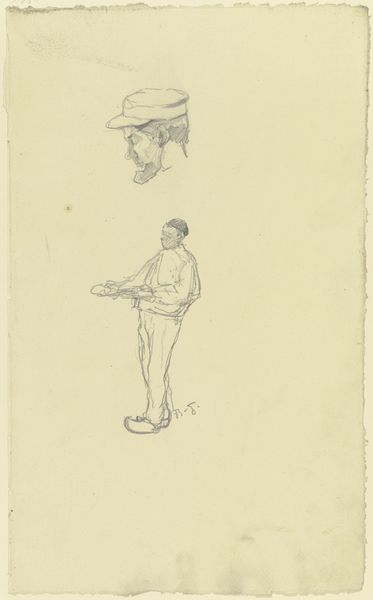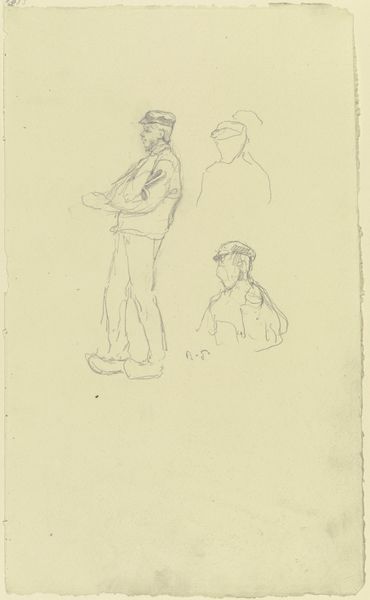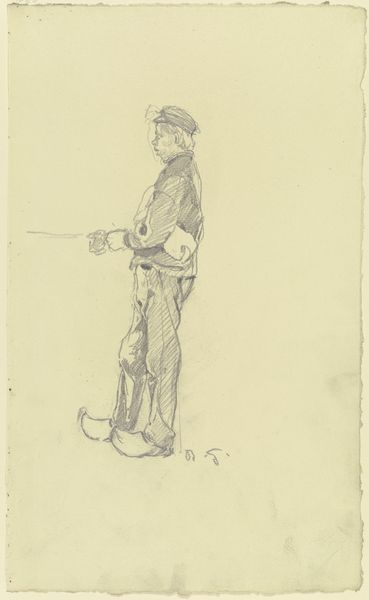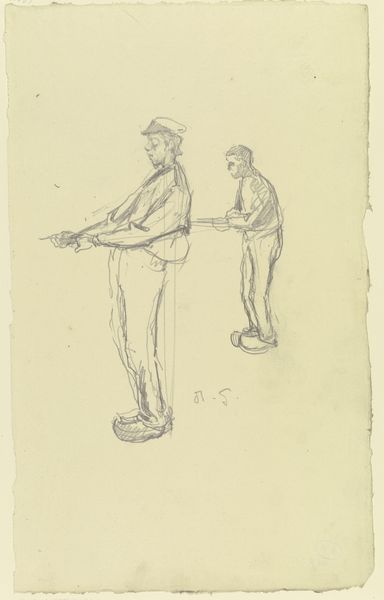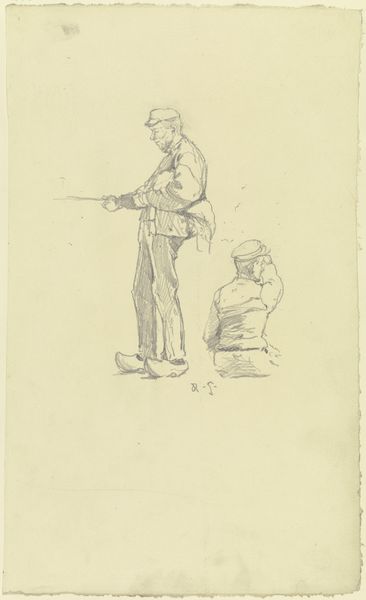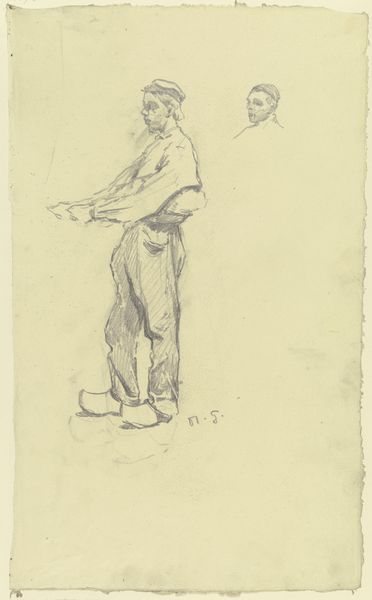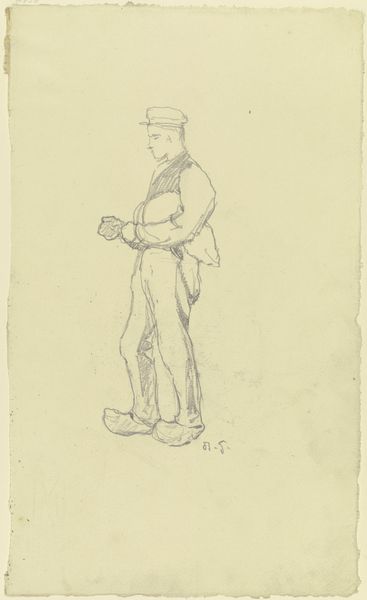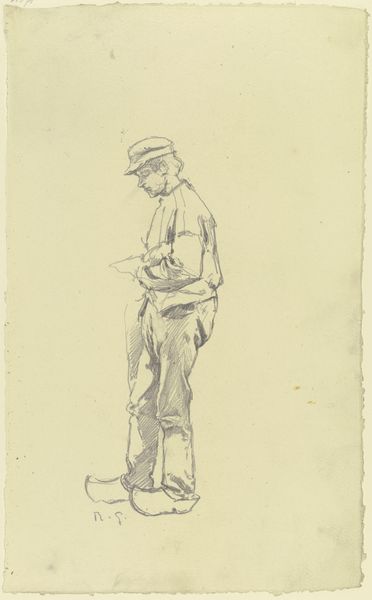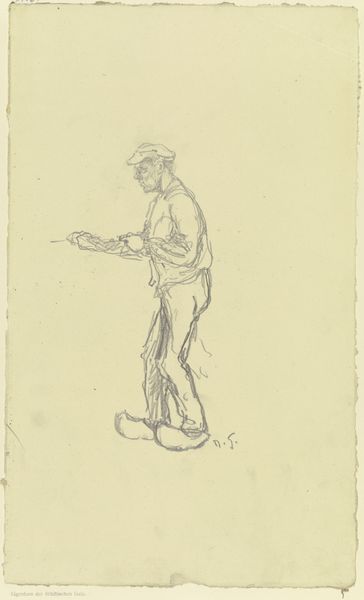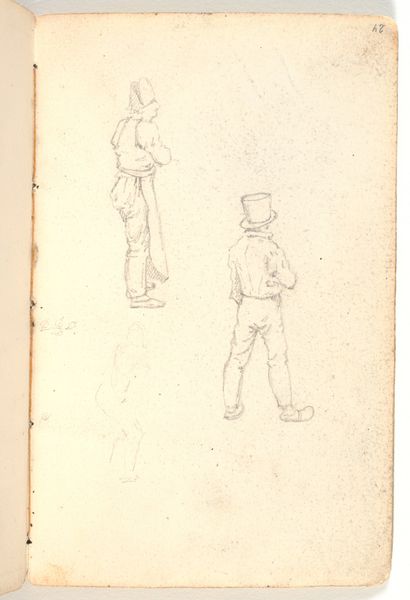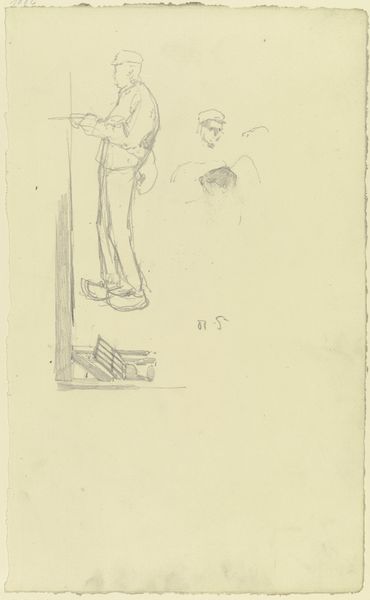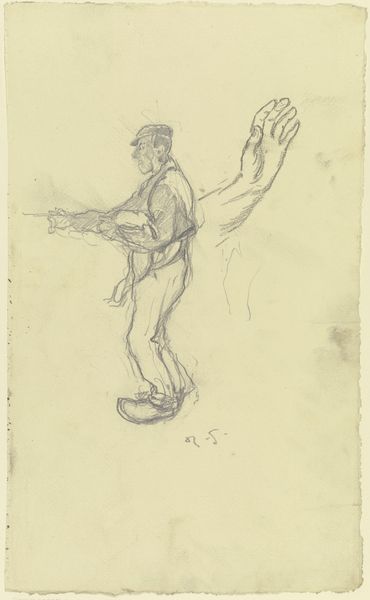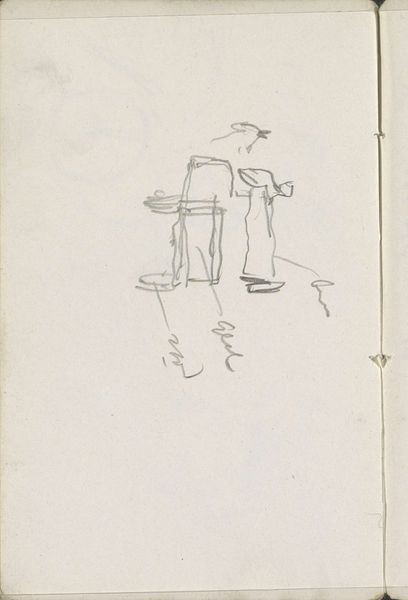
Copyright: Public Domain
Editor: So, this is "Arbeiter aus der _Großen Spinnerei von Edam_," a pencil drawing by Rudolf Gudden from around 1894. It shows two sketches of workers. It feels so raw and immediate, almost like a snapshot. What strikes you most about it? Curator: What immediately captures my attention is the way Gudden depicts labor in this burgeoning industrial landscape. The men in their clogs and caps…they represent a particular class at a very specific moment in time. Think about the social dynamics: who typically got represented in art, and how? This is quite different, wouldn't you agree? Editor: Absolutely. Most portraits from that era were of the wealthy elite, not factory workers. The focus here feels almost…radical? Curator: Precisely! Gudden elevates these workers, drawing attention to their presence and contributions within society. It also raises questions about the role of the artist. Was he critiquing or simply documenting? What does the presence of two figures, one standing and one seated, suggest about the artist's intent, in that social context? Editor: It makes me wonder about their individual stories and their working conditions. Perhaps this was Gudden's way of giving them a voice. Curator: Exactly. Art like this reflects shifting power dynamics and the evolving relationship between art and the public. It demonstrates the potential for art to participate in broader socio-political conversations. Editor: I never really thought about art from this period as social commentary, but this sketch has completely changed my perspective. Thanks! Curator: And for me, it's a reminder of how even seemingly simple sketches can hold complex social narratives, demanding we look deeper into the public function of art.
Comments
No comments
Be the first to comment and join the conversation on the ultimate creative platform.
